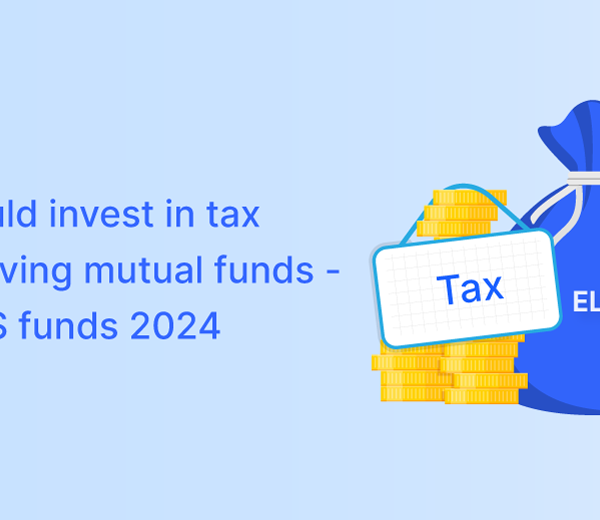Investing in mutual funds has become quite a popular way for individuals to benefit from the lucrative returns generated from the stock market while benefiting from professional fund management. While large-cap funds are relatively well-known, mid-cap and small-cap funds offer unique and even higher return-earning opportunities for investors looking for potential high-growth stocks.
Midcap and smallcap appeal amid highs of stock markets, and as per a report by Mint, small caps have become favorites for mutual fund investors due to the potential for returns. However, it is crucial to understand what mid-cap and small-cap funds are and why you should consider investing in them. Let’s find out with Koshex.
What are Mid Cap Funds?
Mid-cap funds are a category of mutual funds that primarily invest in stocks of mid-sized companies. While the large-cap companies include companies with a market capitalization of above Rs. 20,000 crores, the mid-cap companies include companies with a market capitalization between Rs. 5000 crores to Rs. 20,000 crores. These companies fall between large-cap (established, well-known companies) and small-cap (emerging or relatively smaller companies) in terms of market capitalization. Mid-cap companies are typically in a growth phase and have the potential for substantial capital appreciation.
What are Small Cap Funds?
Small-cap funds, on the other hand, focus on investing in stocks of small-sized companies. These include companies with market capitalization below Rs. 5000 crores. These companies are often considered riskier due to their smaller size, and they have much higher growth potential but also higher volatility. Small-cap funds aim to tap into the growth of these emerging companies.
Why Invest in Midcap and Small Cap Funds?
Investing in mid-cap and small-cap funds offers unique benefits to mutual fund investors, including but not limited to the following:
- Growth Potential: Mid-cap and small-cap companies have room for significant growth. The higher the growth opportunity, the higher the return-generating capability. This makes them attractive for investors looking for higher returns over the long term.
- Diversification: Investing in mid-cap and small-cap funds provides diversification by spreading risk across multiple stocks. This diversification can help reduce the impact of poor performance from individual stocks.
- Market Cycles: Mid-cap and small-cap stocks often perform well during certain market cycles. These companies can benefit from increased consumer spending and growth opportunities when the economy is booming.
- Professional Management: Experienced fund managers manage mutual funds, conducting research, analysis, and stock selection to build the best portfolio. This reduces the need for you to analyze and pick stocks, thereby directly reducing the risk of losses.
How Mid and Small Cap Funds are Better Than Large Cap Funds?
Each fund type carries its own benefits. However, there are certain reasons why you should be considering investing in mid-cap and small-cap funds as against large-cap funds:
- Growth Potential: Mid-cap and small-cap stocks have higher growth potential compared to large-cap stocks. This is because smaller companies have more room for expansion and can grow their earnings at a faster rate, leading to potentially higher returns for investors. In simpler terms, they are at their growth stage, whereas the large-cap companies are at the peak or saturation stage.
- Diversification: Investing in mid-cap and small-cap funds can provide significant diversification benefits. These funds typically hold a basket of stocks from different sectors and industries, reducing the risk associated with investing in a single large-cap stock or sector. Further, the fund managers tend to ensure adequate diversification to minimize the risk at the maximum.
- Market Inefficiencies: Analysts and institutional investors often provide less coverage to smaller companies, leading to market inefficiencies. Skilled fund managers can identify undervalued mid-cap and small-cap stocks that are not as widely followed, potentially offering opportunities for outperformance.
- Long-term Horizon: Mid-cap and small-cap funds may be suitable if you have a long-term investment horizon and can tolerate higher volatility. Over the long term, the compounding effect of higher growth rates can lead to significant wealth accumulation for you.
- Economic Cycles: Mid-cap and small-cap stocks may perform well during different phases of the economic cycle. They may benefit from economic expansions when their growth prospects improve and may also be more resilient during market recoveries.
Selecting the Right Midcap and Smallcap Fund
While midcap and smallcap funds appeal amid highs, you need to select the right fund to maximize your returns while also earning lucrative returns. It’s not just about numbers; it’s about finding a mutual understanding and a shared vision for your financial future. Following these tips will help you select the right midcap and smallcap funds for investment.
- Research Performance: Before investing, research the fund’s performance.
- Assess the Manager: Further, you should also check the track record of the fund manager to understand and gauge their experience and expertise.
- Expense Ratio: To maximize your returns, you should ensure that the expense ratio is low. The expense ratio is the annual cost of managing and operating a fund.
In a Nutshell
Investing in mid-cap and small-cap appeals amid highs of the stock market. These mutual funds can be rewarding if you seek higher growth potential in your portfolios. These funds provide access to the growth of mid-sized and small-sized companies, which can lead to significant returns over time. As these companies are at the initial or mid-stage of their growth phase, they hold much potential for compounding benefits.
However, you should know that these funds can also be more volatile and carry higher risks. It’s crucial to assess your risk tolerance and investment horizon before allocating funds to these categories. But how to select the right mid-cap and small-cap funds? Which platform is ideal for providing adequate options and a seamless investing experience?
Koshex offers 5000+ different mutual funds to select from. You can shortlist the funds based on your category, compare them, and select the ones that best suit your investing needs and preferences. With the seamless investment experience and low-cost investing, Koshex has remained the investor’s go-to platform for investing. Sign up now with Koshex!
Frequently Asked Questions
Q: What is the difference between mid-cap and small-cap funds?
A: Mid-cap funds invest in stocks of mid-sized companies, while small-cap funds invest in stocks of small-sized companies. The market capitalization is between Rs. 5000 crores to Rs. 20,000 crores in the case of mid-cap companies and below Rs. 5000 crores in the case of small-cap companies. Small-cap funds rank higher than mid-cap when it comes to both return potential and risk ratio.
Q: Are mid-cap and small-cap funds riskier than large-cap funds?
A: Yes. Mid-cap and small-cap funds tend to be riskier than large-cap funds due to the higher market volatility and liquidity risks associated with smaller companies. However, they also offer the potential for higher returns at the same time, thus making them investor’s favorites.
Q: What is the ideal investment horizon for mid-cap and small-cap funds?
A: Financial advisors often recommend a long-term investment horizon for mid-cap and small-cap funds. This rides out market volatility and helps investors earn lucrative returns when these companies realize their growth potential.









Leave a Comment